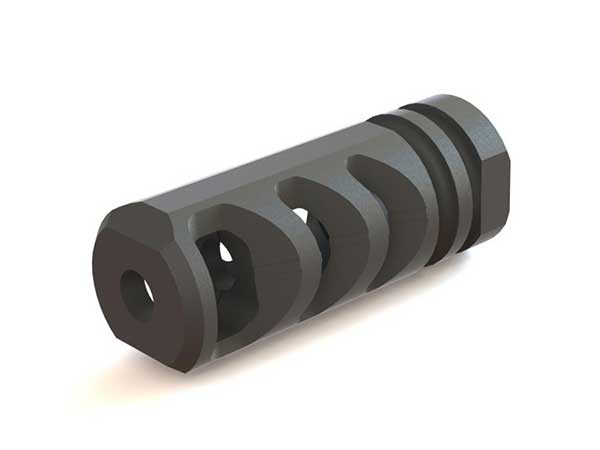

Cartridgeīy using a muzzle brake, we were able to tame the monster 300 Norma Mag so that it felt more like a bare muzzle 308 or 6.5 Creedmoor. Here is a summary of the underlying numbers behind the recoil signatures shown above. I explained those two aspects to recoil in more detail in the recoil post, including why some people believe one or the other to be more important. Not only was the peak of the force reduced, but the total impulse or momentum coming back at the shooter was also reduced (represented by the total “area under the curve”). It’s clear that muzzle brakes significantly reduced the recoil of the each rifle. This isn’t a stock field test, but I thought that was interesting to note … and maybe an idea for a future project! 😉 Just as a reminder, the 6XC was a Manner’s Carbon Fiber Stock, the 6.5 Creedmoor was a McMillan A5 Stock, the 308 was a standard Savage stock (not their AccuStock, but their cheapest stock), and the 300 Norma Mag was an Accuracy International AX chassis. I did test other rifles chambered in 6.5 Creedmoor and 308, and while the % of recoil reduction for the muzzle brakes were very similar within the same cartridge … the recoil signatures seemed to vary based on the stock. In fact, you can see echoes of the same patterns of peaks and valleys in the bare muzzle and best muzzle brake signatures shown above, within the same rifle. Those unique quirks in the recoil signatures were consistent for a given rifle, even when using different muzzle brakes. I believe much of that is correlated to stock design. You may be wondering why some of the recoil signatures are smooth and others are more irregular. rifle without any muzzle device), as well as the recoil signature for the muzzle brake that did the best job at reducing recoil for each of the rifles. That is over 10 times faster than the blink of an eye! The graphic shows recoil signatures for the rifles with a bare muzzle (i.e. Each line represents almost 1000 data points, which were recorded in about 1/100th of a second. The graphic below shows the amount of recoil force over time for each rifle, which was directly measured at the butt of the rifle. To recap, here is a look at the 4 cartridges and rifles used for the recoil tests:įirst, let’s look at how the recoil signature of each rifle was affected. You can dive deeper into the recoil data in these posts: 276 Pedersen round would've been a bit more like the 7mm-08 Remington than the commonly found versions found today.This post provides a comprehensive view of the muzzle brake recoil reduction data gathered on all 4 rifles. 276 T3 version, which was slightly lighter, had about 7 lbs of free recoil. 30-06 M1 Garand had free recoil of about 15 lbs, while the. Just don't adopt one like what's used on a 155mm howitzer if it can be avoided.Īlso, just for noting, I did read that a. One that functions heavily as a flash hider and doesn't produce a ton of concussion can be useful. Not that I'm totally against muzzle brakes. Of course, the AK-74 onwards adopted muzzle brakes, but the AK-200 rifles primarily use flash hiders, and the AK-19 also chiefly uses a flash hider. But it was decided not to use brakes, due to concussion and muzzle flash tended to be excessive. It's also notable that early AK-47s were tested with various muzzle brakes and comps in the late '40s/early '50s to try and promote full auto controllability. 308 SCARs and HK417s are often perfectly controllable, especially in semi auto (and often in full auto) usually with flash hiders, for those rifles muzzle brakes aren't a 100 percent must have unless you're using them as a race gun or expect to be doing a ton of full auto. 30 full power rounds that are hot rodded even in self loaders) or anti-material rifles due to caliber/power vs weight. I can understand that for bolt action rifles and magnum calibers (or. Also, if the rifle is well designed as far as lay out, that too is a big advantage and reduces a need/want for a muzzle brake or compensator. A lot of times, it does seem that the self loading mechanism can absorb some of the recoil and aid in controlability. I've been thinking of this for a while, and in my own opinion, you usually don't need a brake for most semi auto rifles unless they're really light weight or magnum caliber or magnum level caliber for self loaders.


 0 kommentar(er)
0 kommentar(er)
